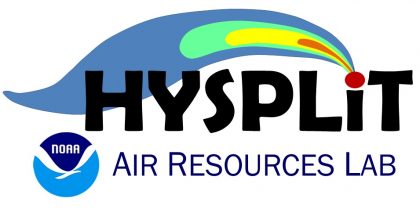ARL’s HYSPLIT Model Sets New Usage Record in 2017
January 2018
January 2018
ARL’s HYSPLIT model is well-known in the atmospheric science community as one of the most widely used models for atmospheric trajectory and dispersion calculations. Publicly available via ARL’s Real-time Environmental Applications and Display sYstem (READY) web server (https://www.ready.noaa.gov), users worldwide are able to access and display meteorological data and create trajectory and dispersion model products.
Just one year after setting a record of one million simulations (1,094,305, to be exact), a new record of 1.2 million simulations (1,217,438) was established in 2017.
ARL is proud to note that the number of HYSPLIT simulations produced on the READY server has steadily increased since usage tabulations began in 2009.
Primarily used by NOAA’s National Weather Service and local Weather Forecast Offices, HYSPLIT also serves as a resource for first responders, emergency planners, academia, and other government agencies. This modeling system offers a wide variety of tools, ranging from simple back trajectories to sophisticated computations of transport, mixing, chemical transformation, and deposition of pollutants and hazardous materials. Example applications of HYSPLIT include the simulation of atmospheric tracer release experiments, radionuclides, hazardous chemicals, smoke originating from wildfires, volcanic ash, mercury, and wind-blown dust.
Current development activities have focused on adding the capability to run the Weather Research and Forecasting model within READY. This enhancement enables specialized users to run HYSPLIT with high resolution meteorological data to improve local-scale dispersion forecasts, especially in areas of complex terrain and near bodies of water where the local wind fields can be impacted by these features. ARL is now working to offer the ability to run an ensemble dispersion forecast, a feature that plans to utilize the Short-Range Ensemble Forecasts meteorological data to provide a measure of uncertainty to the dispersion forecast.
